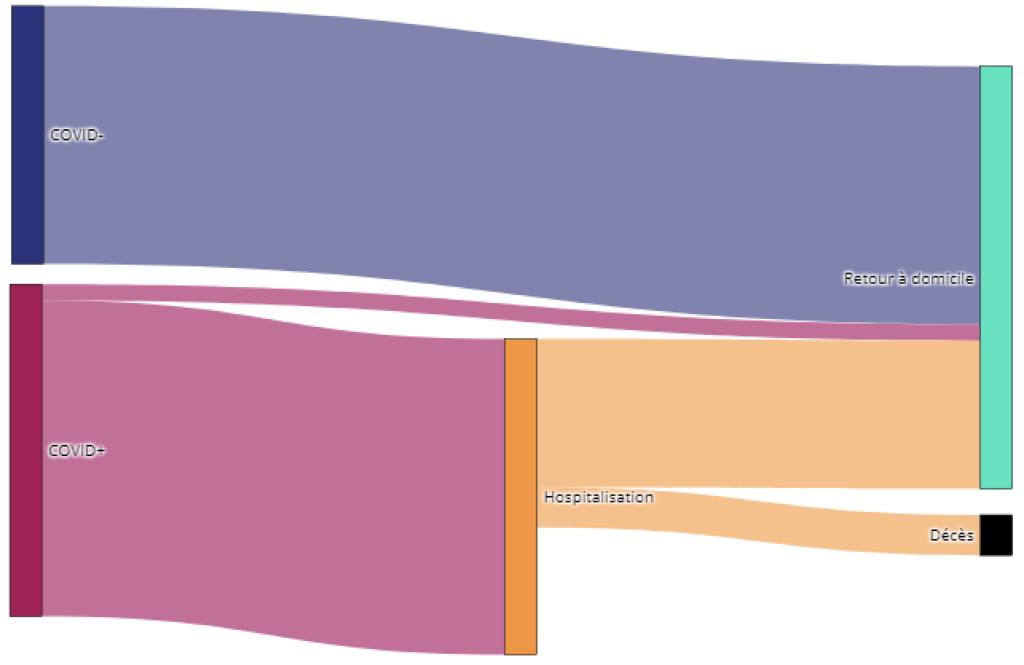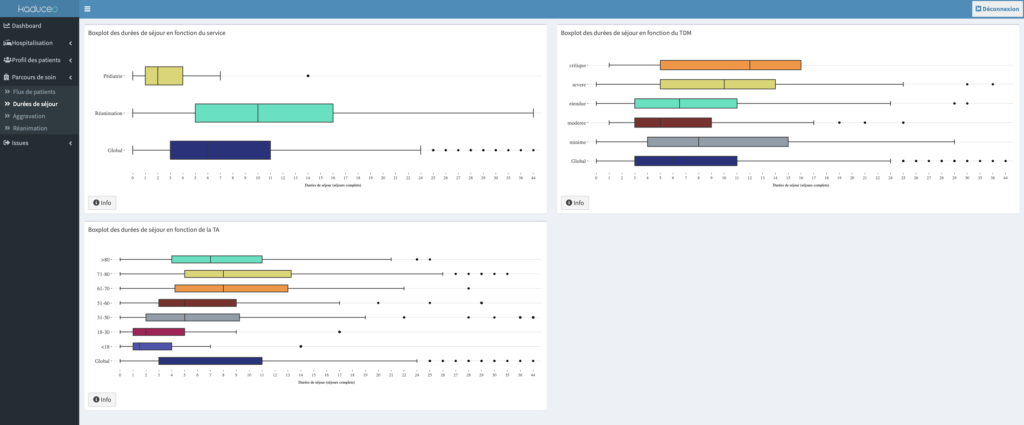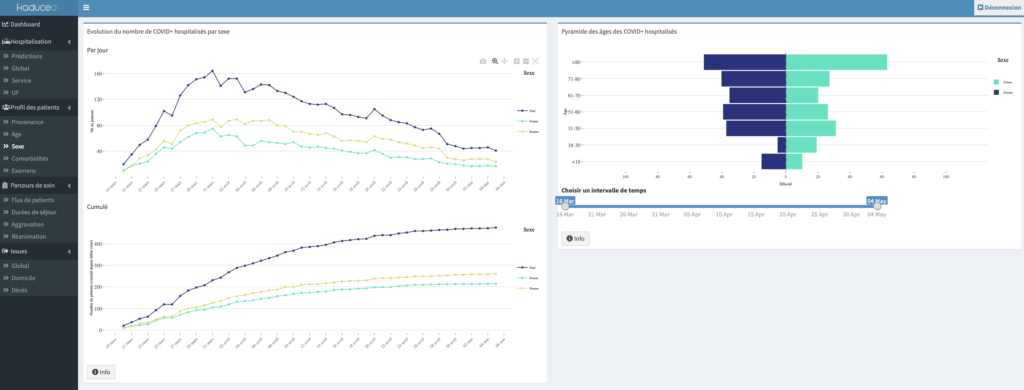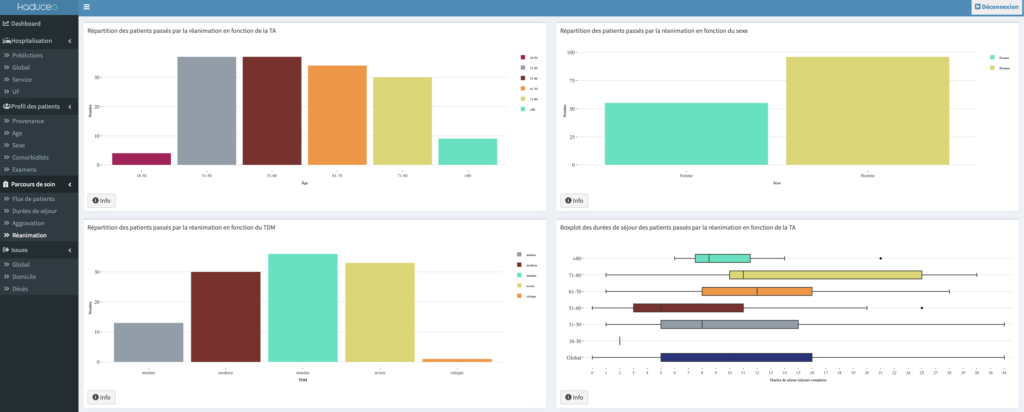Donalie Nugues* - Communication manager & Cédric Giorgi - Deputy CEO Kaduceo
Faced with the health crisis, it was natural for Kaduceo, as for many companies, to make our skills available to hospitals. Adapting some of our predictive models and indicators to allow hospitals to have a global visibility of the Covid activity within their hospital has become Kaduceo's priority.
For more than 5 years, we have developed expertise in collecting and processing health data for analysis and optimisation of care pathways in therapeutic areas such as medically assisted procreation (MAP), obesity, chronic obstructive pulmonary disease (COPD) and emergencies.
COVID-19 Project
We have a trusting relationship with our partners and some of them contacted us very quickly, convinced that the analysis of their data could help them better understand the activity related to Covid-19 within their establishment. Thanks to their daily indicators and the daily occupancy rate predictions provided by the Kaduceo team, the objective was to anticipate the activity and reorganize the care activities. Our team worked together to adapt its prediction models and propose a concrete response in a very short time to our partners.
First, we adapted our prediction models to anticipate 5-day Covid-19 admissions and overall hospital occupancy. By knowing in advance the moment of saturation, hospitals can open new services and adjust the distribution of medical teams.
Our models show the different phases of the epidemic's evolution (growth, stabilisation and decline). They are based not only on the data of the centre studied but also on the national evolution and that of a hospital centre in a cluster (Grand-Est) to consolidate our previsions.
In addition to the main prediction, we provide a framework that shows the variance of the different models. This confidence interval allows us to make our predictions more reliable, so that the hospital can better anticipate its overall saturation.

Aware of the challenges facing hospitals, we are continually adapting our models to take into account new characteristics (hospital discharge, length of stay, etc.) so that they can anticipate their activity and ensure the best possible medical care.
Mapping
We also provide hospitals a daily interactive map identifying the origin of patients admitted to the hospital. This map allows hospitals to determine where the risk areas are and to anticipate their evolution in order to inform the regional and national public authorities and to support them as best as possible in an optimised exit from the crisis.

Follow-up indicators
Our expertise in the observation and analysis of care paths has led us to develop indicators for monitoring medical care. We have adapted them to offer hospitals a complete overview and analysis of Covid activity on a daily basis.
Every day, we establish global and functional unit (FU) volumetric analyses that allow hospitals to have a clear vision of the occupancy rate of their services and to be able to adapt in the best way. We also provide a daily updated interactive visualisation of the patient pathway so that hospitals can have a simplified overview of the Covid activity in their hospital.

In addition, we propose monitoring indicators such as patient profile (age group, gender, geographical origin), exit mode (death, transfer, return home) and stay duration.


The construction of new indicators is a priority for our team because we are aware of their importance. We are constantly listening to hospitals and working closely with them to provide them relevant and trustworthy indicators. These indicators are essential for hospitals as they provide a lot of information about patients and their medical care. By understanding the epidemiological profile of Covid 19, hospitals can implement adapted and optimised care protocols.
Web application
Faced with the urgency of the situation, we quickly developed a simple, free and secure web application (approved HADS, the European equivalent of HIPAA). It gathers all our analysis and predictions for each hospital and provides daily updated and personalised informations.
Our idea was to provide in a very short time a sober and practical interface that allows our teams as well as the users to focus on the key points, the understanding of the activity related to the Covid-19 and the improvement of the medical care.

